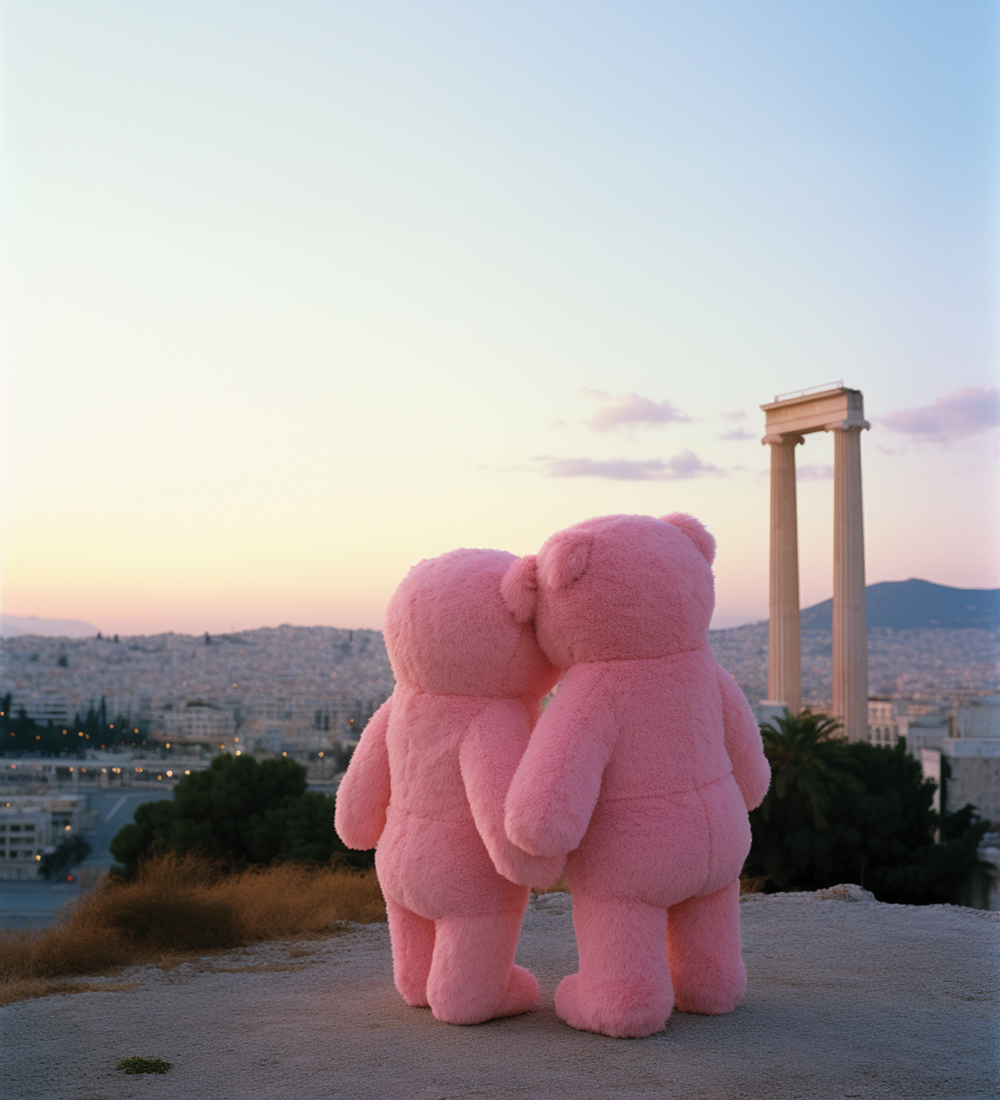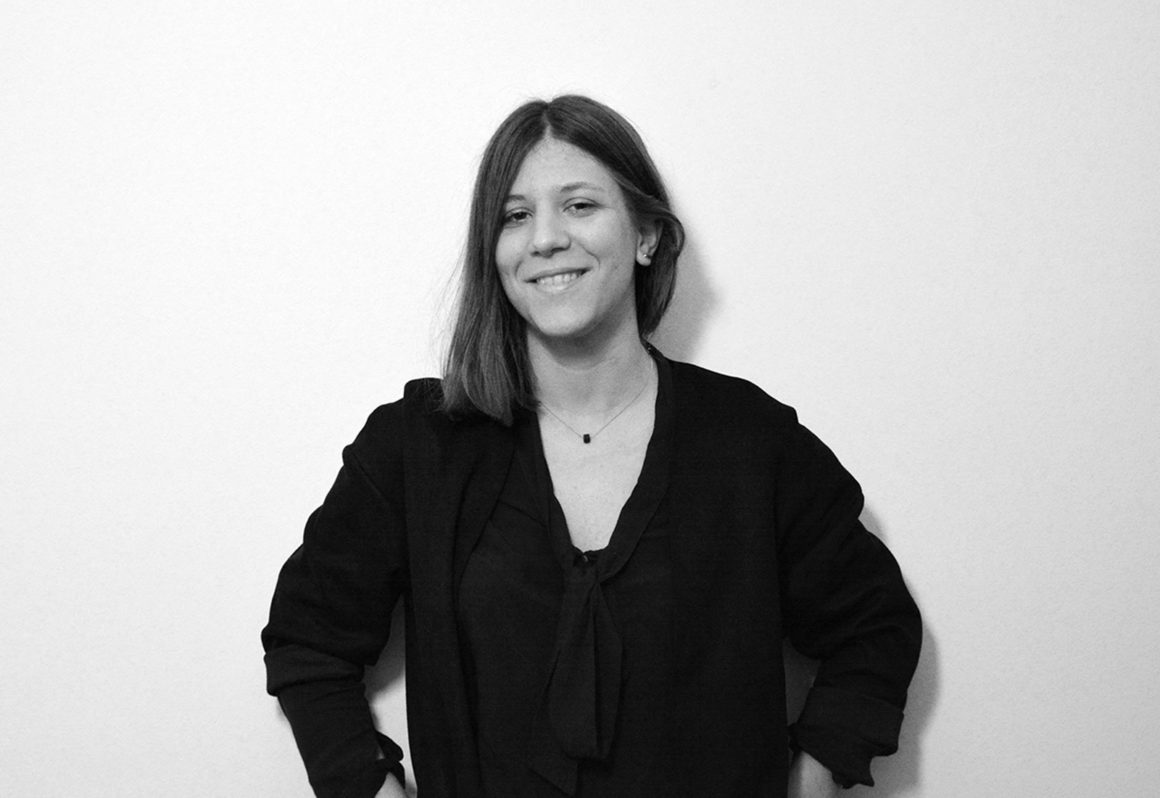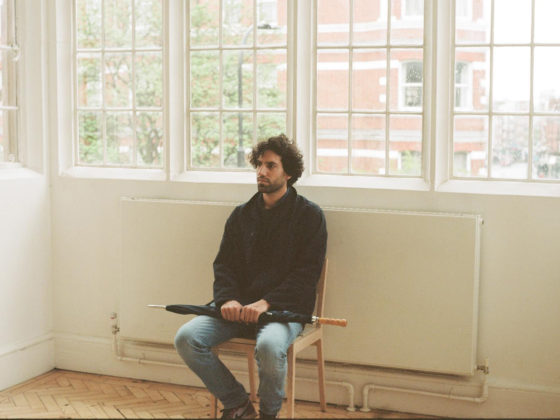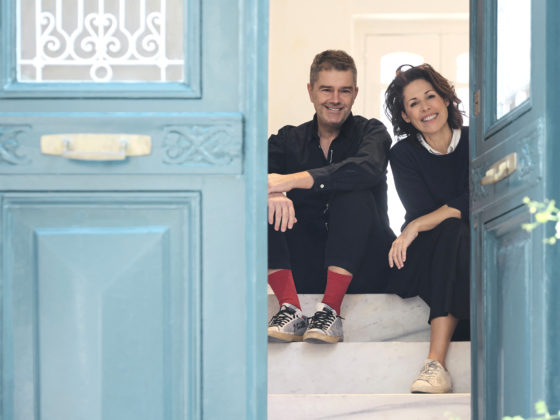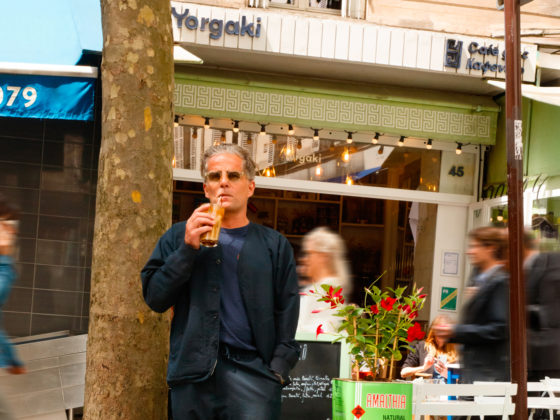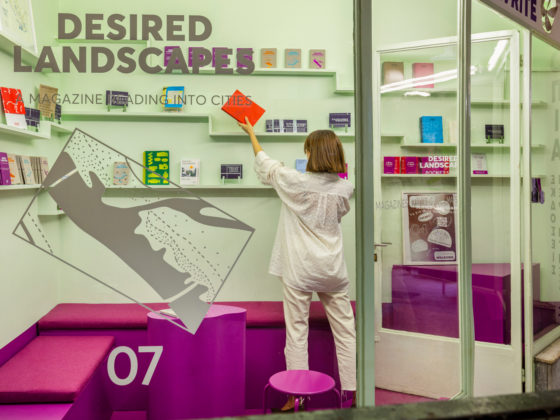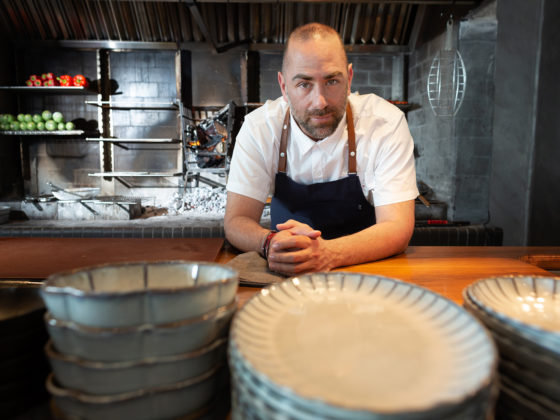Tina Marinaki, the innovative mind behind Athens Surreal, combines her architectural background with cutting-edge AI technology to explore the surreal depths of Athens. Through a unique blend of human creativity and computational power, Tina’s work transcends traditional artistic boundaries, offering viewers a glimpse into a captivating world where the unexpected meets the familiar.
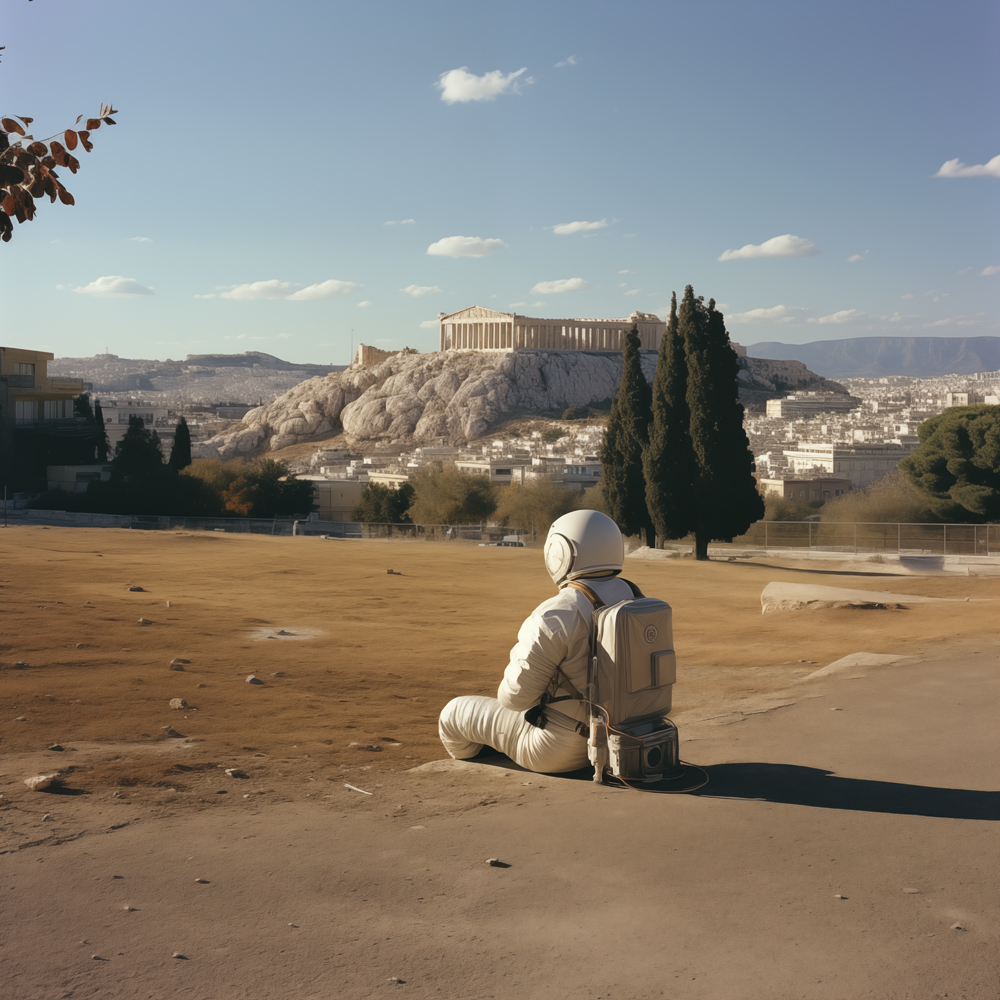
Can you share the inspiration behind Athens Surreal?
I started the idea of Athens Surreal when I first explored AI and without a lot of thinking. The Instagram account acted as an online portfolio of my AI-generated images. The intention behind the Athens Surreal project was first to understand how the different AI tools work, but also to visualize and test different ideas for an Athens, free from rational constraints, exploring themes of dreams and utopian scenarios.
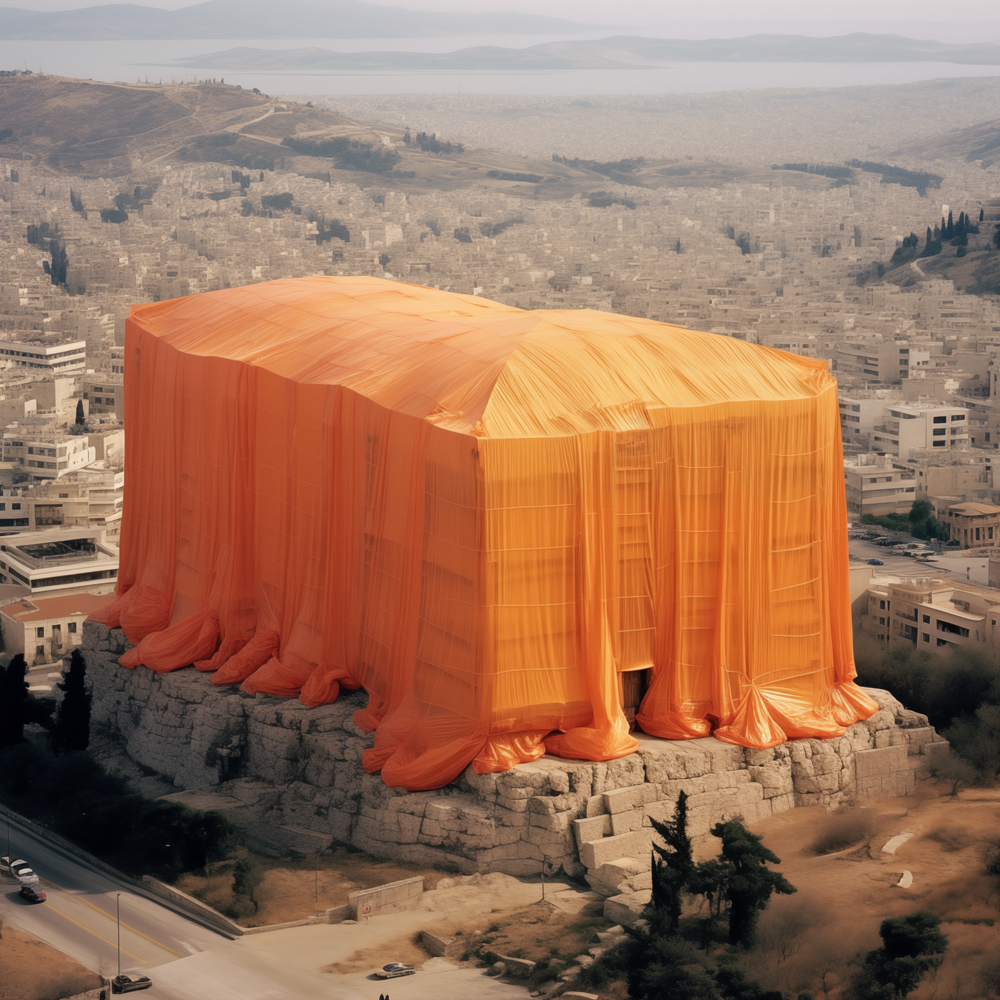
What role does human imagination play in the creation process of the surreal images featured in your account? How do you balance it with the computational processing of AI? Could you walk us through your creative process?
The images are imagined by humans and generated by Artificial Intelligence (AI). Hence, the end result is still driven by human imagination. The machine can only learn and recreate the knowledge it was fed, so one should teach the AI tool a subjective essence of the culture. To create visual material using AI technology one should translate an idea into the correct words and descriptions (the prompts). The latter requires that the outcome should haveI already be envisioned and presupposes the existence of an idea. This element leads me to consider certain factors more before even creating an image, factors such as what will be depicted, what characteristics it will have, what the subject of the image will be, what the weather will be like, the lighting, etc.
“Harnessing AI can help broaden the creative horizons while the collaboration between human and machine can lead to new forms of expression.”
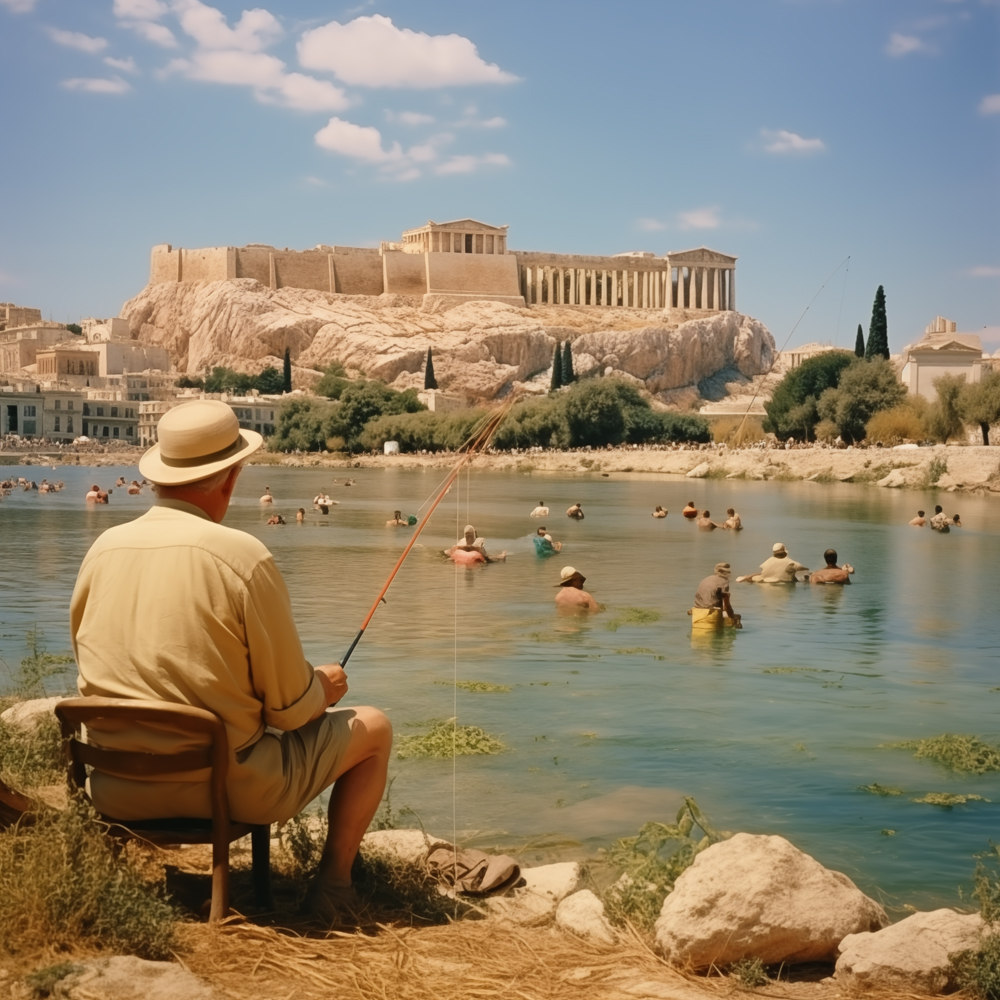
What are some of the challenges you’ve faced in integrating AI technology into your artistic practice, and how have you overcome them?
At the time Athens Surreal started, there were still not many text-to-image AI systems and definitely not as developed as today. For example, machine learning has been now extremely improved in responsiveness and image errors. Some of the difficulties are still found when “translating” an image description. To communicate with the AI systems a series of prompts is required and the selection or even the order of specific words can result in completely different images. Additionally, there are many image error challenges are found in algorithmic ethnicity, gender, or other biases when algorithms are trained using biased data. That means that the images consumed by the engine were not necessarily ‘neutral’, resulting in images subject to inaccuracies or algorithmic bias. For example, many times images show a higher number of men when the user’s parameters do not mention gender, or it may create racist or stereotypical images.
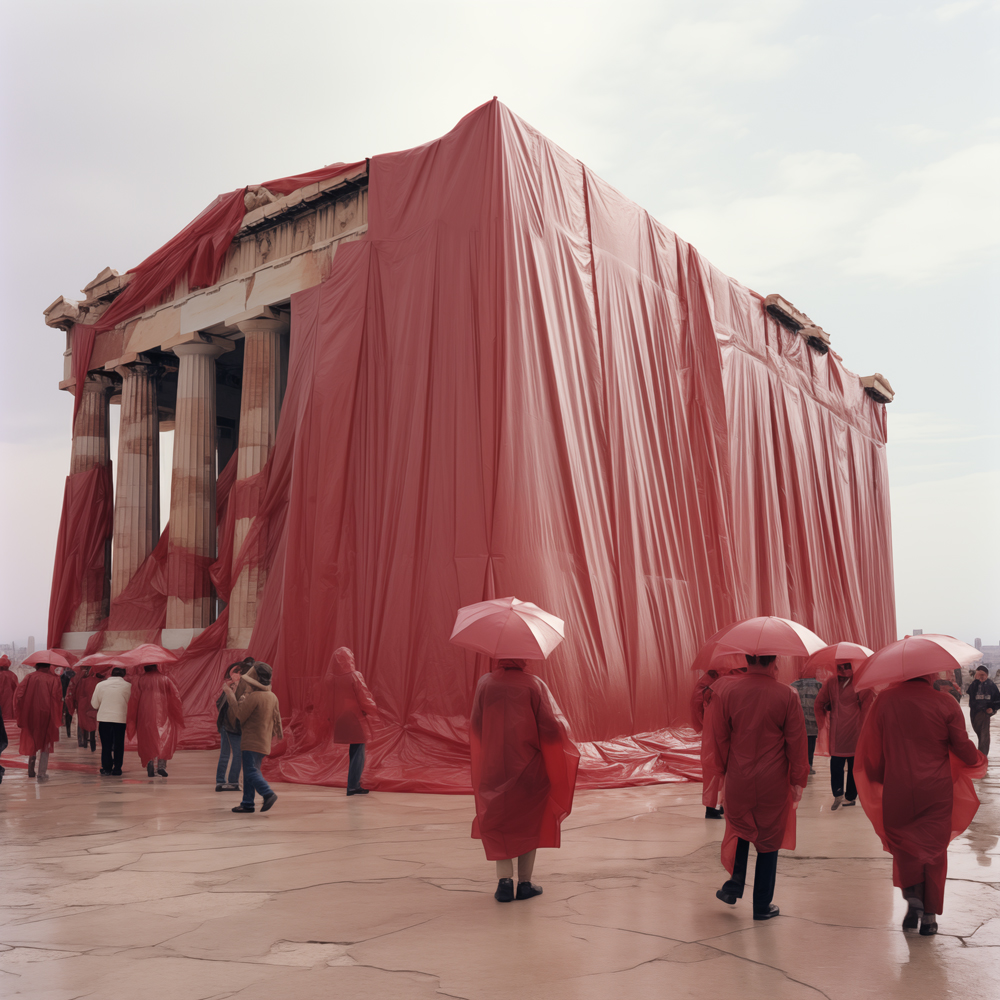
What responses or reactions have you received from audiences regarding Athens Surreal?
The feedback I receive from the Greek followers of the account is mostly positive and enthusiastic! They realize the images are non-realistic images of a city we would like to dream of; surreal ordinary views that would like sometimes to criticize, bring laughter, or inspire.
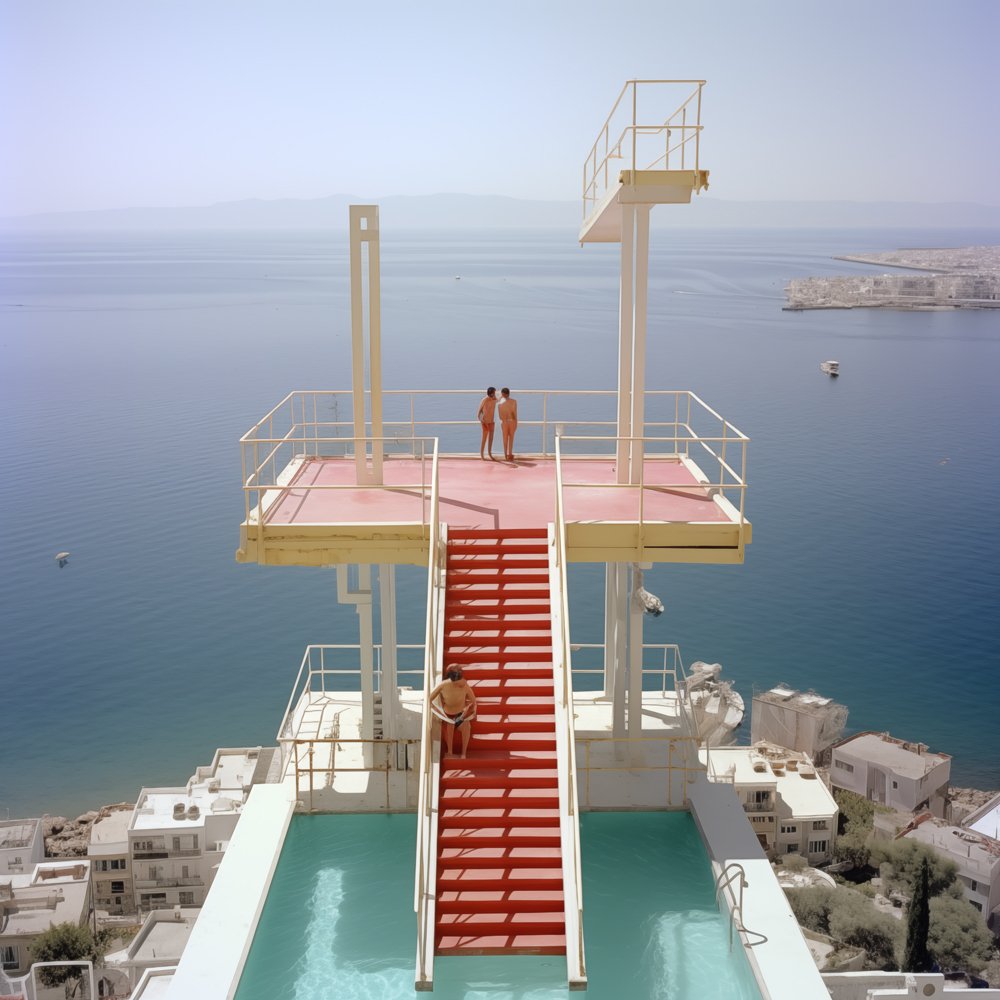
AI seems to be an inevitable revolution. In your opinion, should architects and designers embrace this emerging technology? Do you believe that architecture will continue to be defined primarily by human-to-human interactions, with certain tasks delegated to AI?
AI technology has been integrated into architecture software for many years, preceding widespread discussion of its implications. It serves as a versatile tool impacting both architectural design and construction processes. In architecture, AI serves various purposes, ranging from inspiring new ideas and enabling experimentation to detecting structural issues through AI sound sensors. Moreover, Artificial Intelligence plays a significant role in optimizing data in construction projects, suggesting optimal parameters based on input data. Numerous leading architectural firms have developed their own machine learning and AI tools, facilitating the design of intricate projects with innovative materials and responsive design.
The introduction of AI is expected to accelerate the production time in architecture considerably. However, while optimization and efficiency are important aspects, architecture encompasses more than just these factors. It involves reimagining the spatial qualities of our surroundings. Although certain tasks within the architectural process, such as generating alternative options or layouts, may be delegated to AI, it currently cannot supplant the authorial presence and the role of the creative mind remains irreplaceable.
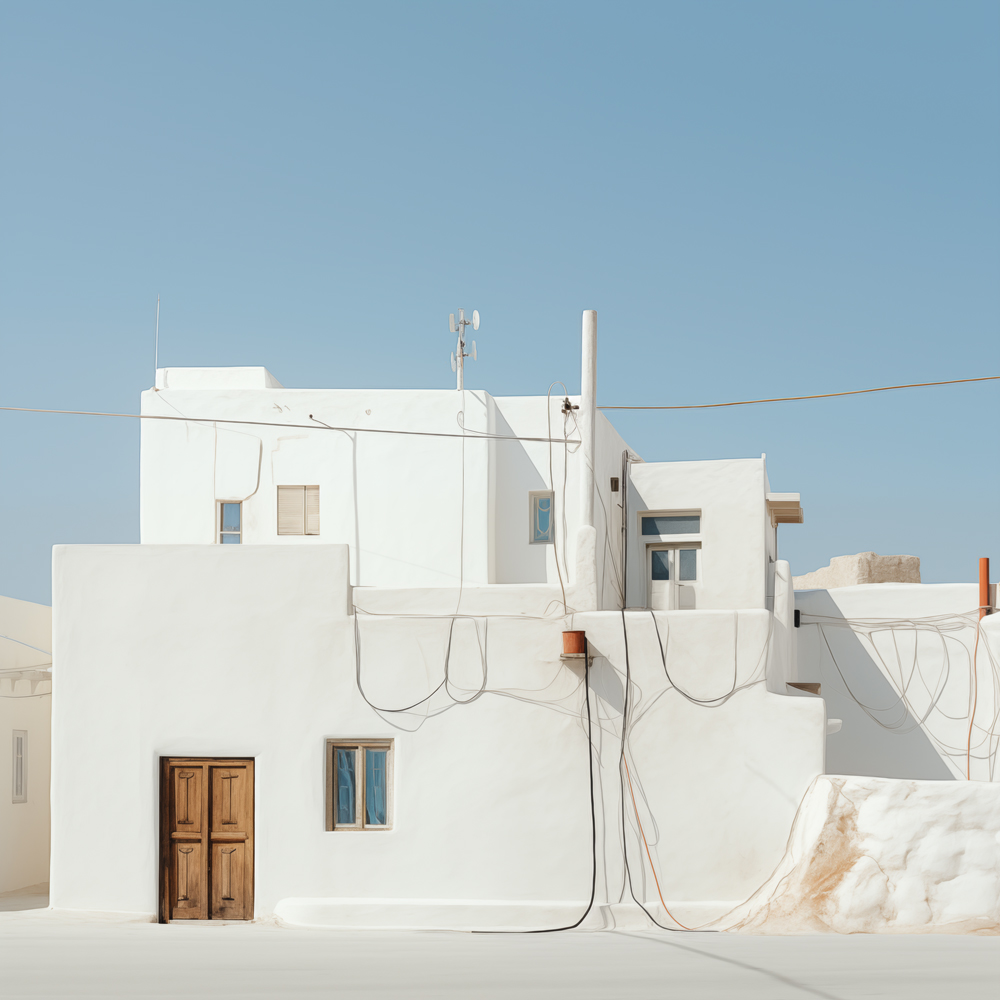
How do you envision the potential of this technology to surprise us in terms of enhancing everyday life? Can it potentially streamline the process of connecting individuals with whatever they might need or seek in a space or experience, making it more accessible and convenient?
AI technology holds the promise of making everyday life more convenient, accessible, and enjoyable by leveraging data-driven insights, predictive analytics, and intelligent automation to enhance the way we connect with each other and our surroundings.
The potential and future trajectory of AI technology remains elusive, but we must consistently address the issue of data ownership. It is imperative to establish a constructive rapport with AI and implement regulatory frameworks promptly to safeguard society against challenges such as political propaganda, the dissemination of fake news, intellectual property piracy, and algorithmic biases. Only through such measures can artificial intelligence truly fulfill its potential as an advanced and transformative technological tool.
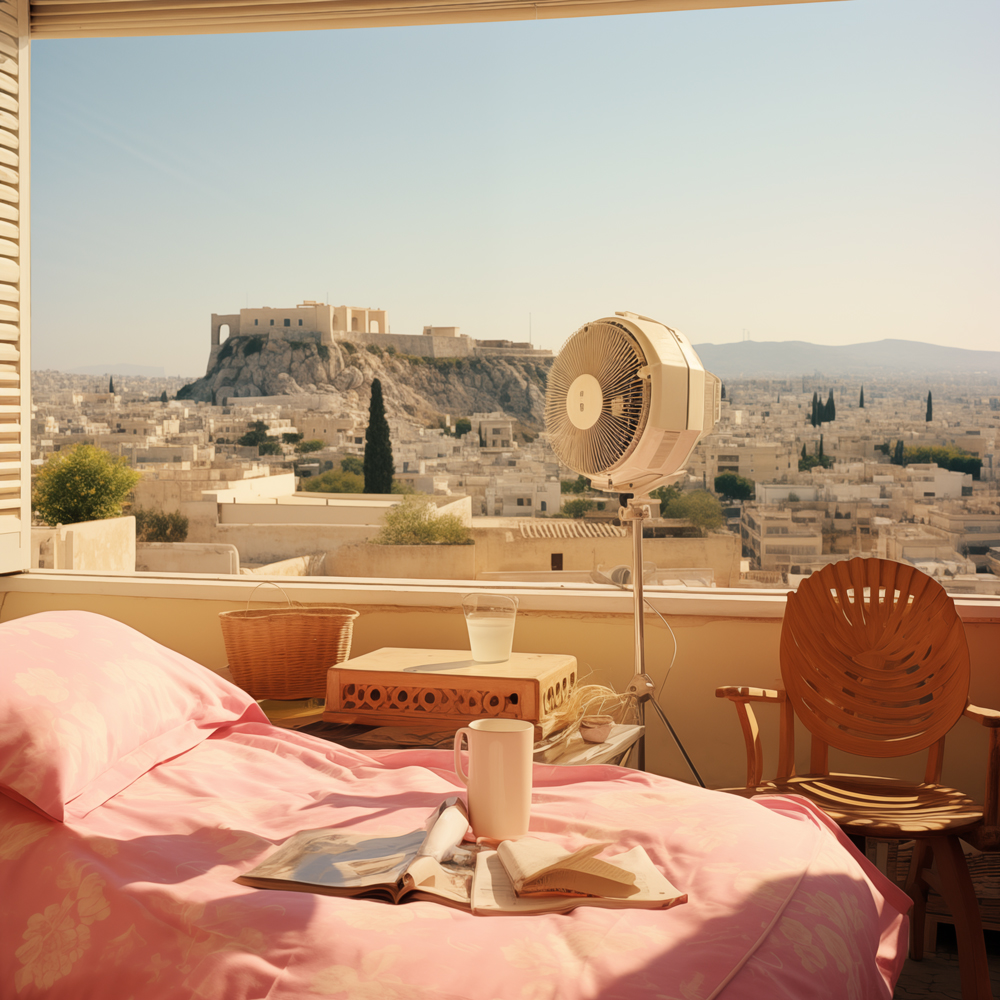
What are your thoughts on the concern that AI might do everything for us? How can creativity play a role in finding meaning and purpose in such a scenario?
The concern that AI might do everything for us, often referred to as the “automation dilemma,” has been a subject since the Industrial Revolution. While AI undoubtedly has the potential to automate many tasks and processes, it cannot replicate the uniquely human capacity for creativity and innovation, as well as intuition, and emotional intelligence.
“By embracing creativity and leveraging it alongside AI, we can navigate the challenges and opportunities of the digital age while continuing to create, innovate, and explore new horizons.”
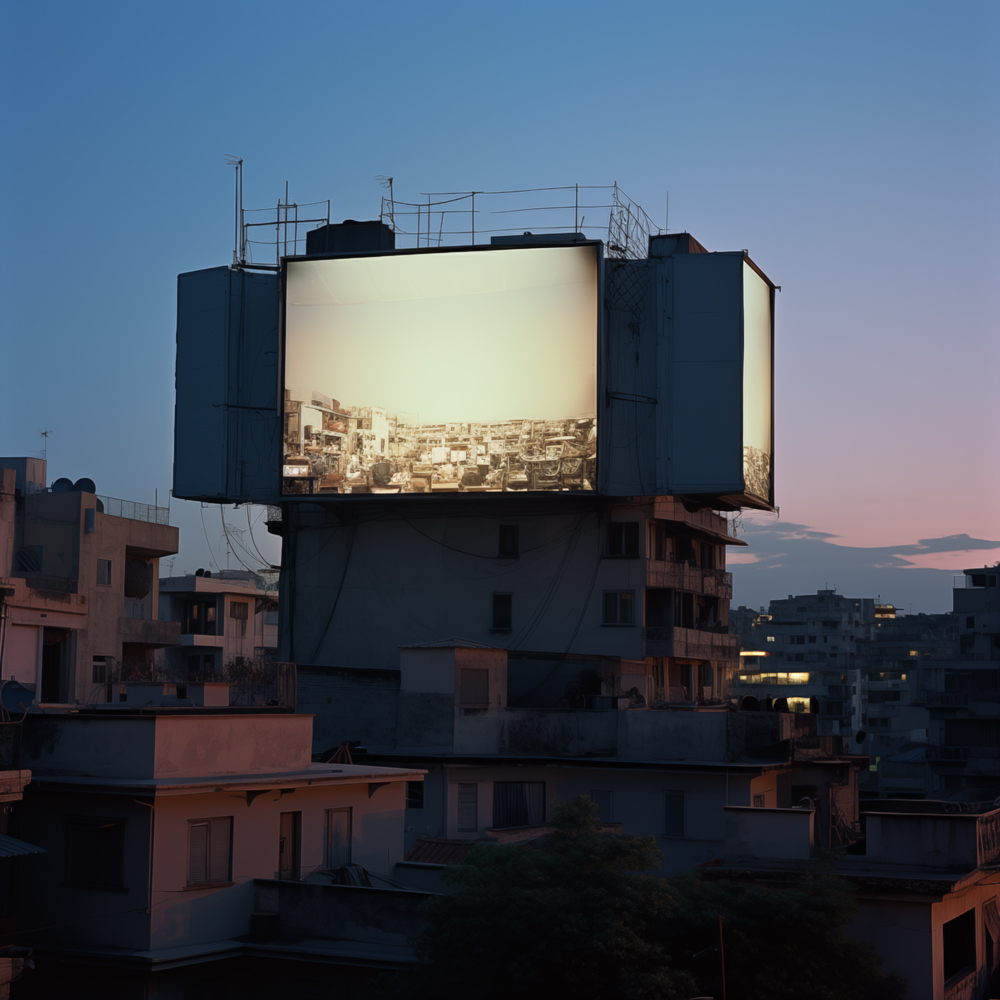
This new world of ‘fantasy’ is quite captivating. In your opinion, do you think it’s a necessity for us as individuals or as a society to enhance our creative imagination?
Enhancing creative imagination through any means can be highly beneficial, both on an individual level and for society as a whole. It’s only by thinking outside of the box that people can come up with innovative solutions, make advancements and enrich our lives.
